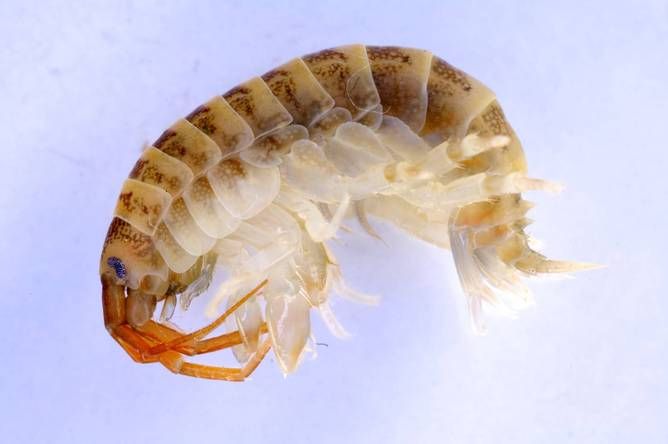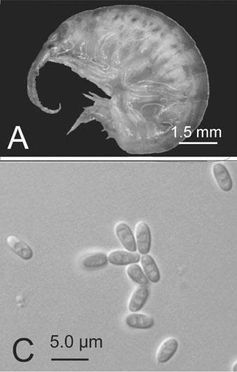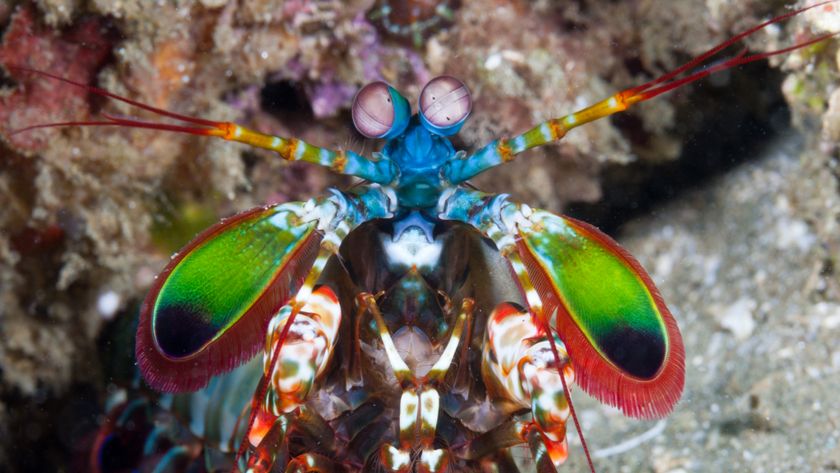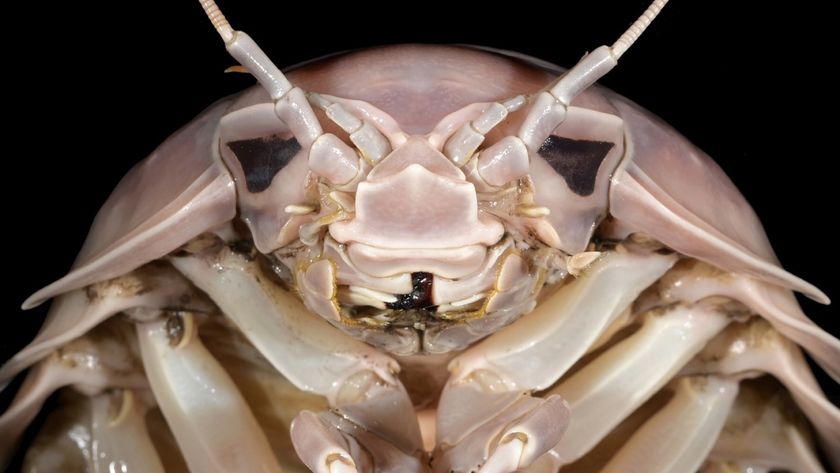
There's Just One Thing Stopping Killer Shrimp from Wreaking Even More Havoc

This article was originally published at The Conversation. The publication contributed the article to Live Science's Expert Voices: Op-Ed & Insights.
Alien species become invasive when their introduction to an ecosystem ends up causing ecological disruption in their new home. Cane toads, rabbits, water hyacinth, and zebra mussels are all infamous examples. Often these creatures are introduced to get rid of “pests”.
Now a “killer shrimp,” Dikerogammarus villosus, has become a nuisance in Europe. But new research shows that thanks to a little parasite, the killer shrimp has caused much less havoc than it might otherwise have been capable of.
One of the theories for why some introduced species become so successful in a new region is called the “enemy release hypothesis”. In their new home, introduced species run amok as they are no longer hounded by their usual foes that would otherwise keep their population in check.
Dikerogammarus villosus is an amphipod – a little, shrimp-like crustacean – from the Ponto-Caspian region that has invaded western and central Europe, and is now also found in the UK. They only grow up to a little over an inch long, but they are voracious little predators that eat everything smaller than themselves, including each other. Released from their usual predators and parasites, the amphipod rips through the freshwater life of its new neighbourhood.
The inescapable foe
But D. villosus has not completely escaped from its past foes, according to a recent paper in the journal Parasitology. A nasty parasite (a microsporidian) called Cucumispora dikerogammari invades the amphipod’s muscles, reproduces prolifically and eventually kills it. There is some concern that this parasite can spill over into the native invertebrates . But it is also one of the few things holding back the voracious D. villosus from causing even more destruction.

A group of scientists from France conducted a study to look at how C. dikerogammari affects the activity levels and appetite of D. villosus. The scientists observed the behaviour of both infected and uninfected amphipods in a water-filled glass tube and noticed that amphipods at a late stage of infection that are visibly “filled to the brim” with parasite spores are actually more active than healthy amphipods or those that are not visibly parasitised because they are at a much earlier stage of the infection.
Sign up for the Live Science daily newsletter now
Get the world’s most fascinating discoveries delivered straight to your inbox.
They also presented amphipods with bloodworms to see how many they ate. Both infected and uninfected D. villosus pounced on those insect larvae, but the heavily infected amphipods ate far less than the healthy ones. For some reason, this parasite seems to cause D. villosus to lose its appetite, and given this crustacean’s reputation of eating everything that it can get its claws around, this may have reduced its overall ecological impact.
Yet again, another parasite has busted the myth that they are just free-loaders. But the story leaves an unanswered question, why would the parasite make its host more active before killing it?
This could just be an odd manifestation of the parasitical disease. Regardless, such behaviour is certainly a useful one for the parasite – as it depends upon cannibalism for transmission to new hosts.
Dikerogammarus villosus usually prefer to stay under a shelter and wait for potential prey to wander by. By getting their host out and about, C. dikerogammari might increase the chances that its host will either run into one of its cannibalistic buddies, or die out in the open where it can be scavenged by other amphipods.
It seems that, for the invasive killer shrimp, no matter how far you go, you can never really run away from your past.
This is a modified version of a post that originally appeared on the Parasite of the Day blog.
Tommy Leung does not work for, consult to, own shares in or receive funding from any company or organisation that would benefit from this article, and has no relevant affiliations.
This article was originally published on The Conversation. Read the original article. The views expressed are those of the author and do not necessarily reflect the views of the publisher. This version of the article was originally published on Live Science.












